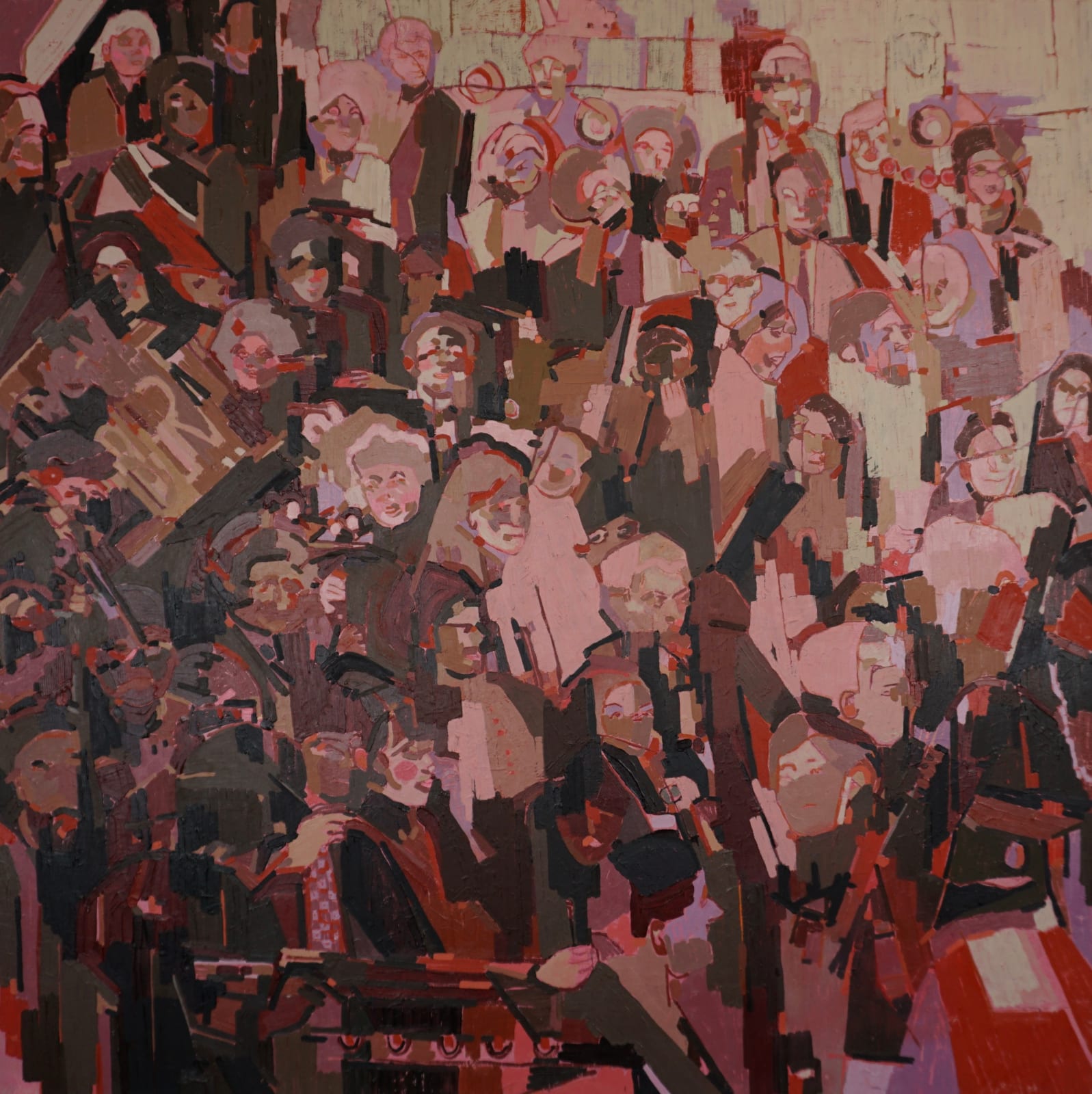Lizzie Lilley
Worldly (1970)
Oil on plywood panel
Framed Size: 64 x 63 cm
Lizzie Lilley's 'Worldly' (1970) presents a captivating study of humanity through a densely populated composition of figures rendered in a sophisticated palette of mauves, pinks, browns and reds. This oil...
Lizzie Lilley's "Worldly" (1970) presents a captivating study of humanity through a densely populated composition of figures rendered in a sophisticated palette of mauves, pinks, browns and reds. This oil on plywood panel depicts a crowd scene where dozens of faces and partial figures overlap and intersect, creating a tapestry-like effect of humanity in motion. Lilley employs confident, semi-abstract brushwork that fragments and reconstructs her subjects, allowing the warm undertones of the plywood to show through in places. The painting captures the energy and anonymity of public gathering with remarkable economy of line, suggesting the collective experience while maintaining the individuality of each figure through subtle variations in expression and posture.
Social Commentary in Oils
Displayed on a wall, this modestly sized work (64 x 63 cm framed) commands attention far beyond its dimensions through its dynamic composition and social resonance. "Worldly" exemplifies the mid-century British interest in figurative art that balances representation with expressive abstraction. The painting transforms a space by inviting viewers to pause and engage with its complex narrative of human connection and separation. Each viewing reveals new details and relationships between figures, ensuring the work maintains its visual intrigue and emotional impact over time, making it both a historical document of its era and a timeless reflection on the nature of society and belonging.
Social Commentary in Oils
Displayed on a wall, this modestly sized work (64 x 63 cm framed) commands attention far beyond its dimensions through its dynamic composition and social resonance. "Worldly" exemplifies the mid-century British interest in figurative art that balances representation with expressive abstraction. The painting transforms a space by inviting viewers to pause and engage with its complex narrative of human connection and separation. Each viewing reveals new details and relationships between figures, ensuring the work maintains its visual intrigue and emotional impact over time, making it both a historical document of its era and a timeless reflection on the nature of society and belonging.
Exhibitions
The Scottish New Wave4
of
4




